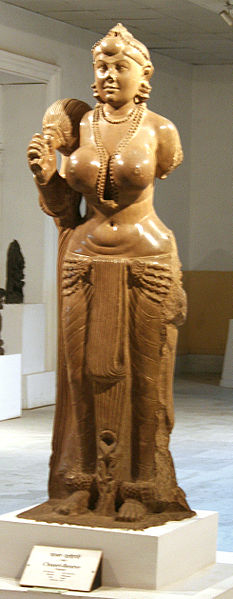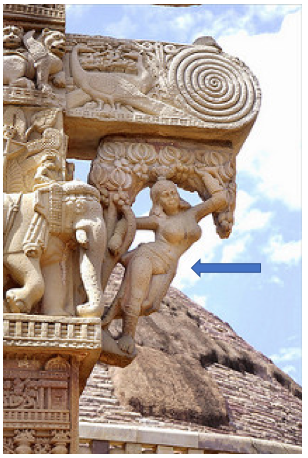Table of Contents |
The yakshi figures date from the same period as the Great Stupa at Sanchi, discussed in the previous lesson, and in fact the specific figures covered in this lesson are from the Toranas, or gates, outside of the Great Stupa. Remember that this structure was originally constructed under the reign of the emperor Ashoka during the third century BC. Sanchi, where this stupa and its toranas are located, is situated roughly in the middle of the Indian subcontinent.
Below is a timeline highlighting the period covered in this lesson.

Yakshi are female earth spirits that have ties to Buddhism, Hinduism, and Jainism. They are common sculptural elements worked into the architectural motifs of religious structures, such as stupas. Often depicted as voluptuous female figures with wide hips, these figures are spirits associated with fertility and protection.

250 BC
Polished sandstone
Particular yakshi could be seen as an embodiment of the dharma or Buddhist law. She could be considered a protector of the law or an embodiment of the law and its abundance.
Notice how the two examples of yakshi figures below emphasize physical features such as wider hips and the enlarged bosom.
EXAMPLE
This image is of a yakshi located at the eastern torana of the Great Stupa of Sanchi.
EXAMPLE
The following image is of two yakshi located at the northern torana of the Great Stupa of Sanchi.
Source: THIS TUTORIAL WAS AUTHORED BY IAN MCCONNELL FOR SOPHIA LEARNING. Please see our Terms of Use.